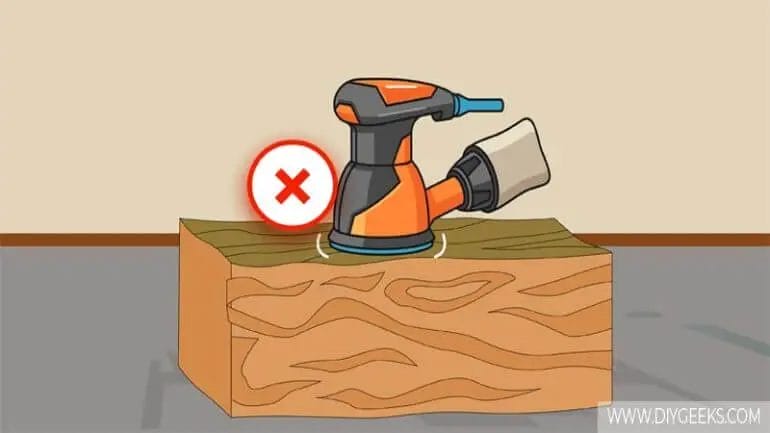Want to give your wooden furniture a fresh new look without the hassle of sanding? Look no further! We have the perfect solution for you. In this article, we will share with you an easy and effective method to remove varnish from wood without sanding.
Traditional methods of varnish removal often involve tedious sanding, which can be time-consuming and messy. However, our alternative method will save you time and effort while still achieving fantastic results.

By using a chemical stripping agent, you can effortlessly lift and dissolve the varnish from the surface of the wood. This method is not only efficient but also helps to preserve the natural beauty of the wood.
With our step-by-step guide, you’ll be able to remove varnish from wood surfaces in no time. Say goodbye to sanding and hello to a hassle-free way of transforming your wooden furniture!

Natural Varnish Removal Techniques: Go Green and Save Money
In this section, we will explore various natural techniques for removing varnish from surfaces. These eco-friendly methods not only help to protect the environment but also save you money by avoiding the use of harsh chemicals. So, let’s dive into some effective ways to remove varnish naturally.
1. Vinegar
Vinegar is a versatile household ingredient that can be used for a variety of cleaning purposes, including varnish removal. To use vinegar for varnish removal, simply mix equal parts of white vinegar and warm water in a spray bottle. Spray the solution onto the varnished surface and let it sit for a few minutes. Then, scrub the area gently with a soft cloth or a brush. The acidic nature of vinegar helps to break down the varnish, making it easier to remove.
2. Baking Soda
Baking soda is another natural ingredient that can be used to remove varnish. Create a paste by mixing equal parts of baking soda and water. Apply the paste to the varnished surface and let it sit for about 15-20 minutes. Then, scrub the area using a sponge or a brush. The mild abrasive properties of baking soda help to loosen the varnish, allowing you to remove it easily.
3. Citrus Peel
Citrus peels, such as those from oranges or lemons, contain natural oils that can effectively dissolve varnish. Take a citrus peel and rub it directly onto the varnished surface. Let the oils sit on the varnish for a few minutes, then wipe it away using a soft cloth. The citrus oils not only help to remove the varnish but also leave behind a pleasant aroma.
4. Heat Gun
If you have an old varnished piece of furniture or woodwork that you want to refinish, a heat gun can be a useful tool for varnish removal. Use the heat gun on a low setting and aim it at the varnish. As the heat is applied, the varnish will soften and become easier to scrape off using a putty knife or a scraper. Be cautious while using a heat gun and avoid overheating the surface.
5. Sanding
In cases where the varnish is thick or stubborn, sanding can be an effective method of removal. Start by using coarse-grit sandpaper to roughen the surface and remove the top layer of varnish. Then, switch to a finer-grit sandpaper to smoothen the surface. Remember to wear a dust mask and protective eyewear while sanding to avoid inhaling or getting dust in your eyes.
In summary, when it comes to removing varnish naturally, there are several eco-friendly options to choose from. Vinegar, baking soda, citrus peels, heat guns, and sanding can all be effective methods for varnish removal. These techniques not only help you go green by avoiding harsh chemicals but also save you money by using readily available household ingredients. So, the next time you need to remove varnish, consider trying these natural alternatives for a more environmentally friendly and budget-friendly approach.

Heat Gun Method: Fast and Efficient Varnish Removal
Varnish removal can be a tedious and time-consuming task, especially if you’re dealing with multiple layers or stubborn varnish. However, with the right tools and techniques, you can make the process much faster and more efficient. One such method is using a heat gun.
A heat gun is a powerful tool that produces a stream of hot air. By directing this hot air onto the varnish, you can soften it and make it easier to remove. Here’s how you can use a heat gun to quickly and effectively remove varnish from your project:
1. Prepare the area
Before you begin, it’s important to prepare the area where you’ll be working. Lay down a drop cloth or newspaper to catch any debris or flakes that may fall during the varnish removal process. Make sure the area is well-ventilated to avoid inhaling fumes.
2. Put on protective gear
Wearing proper protective gear is essential when working with a heat gun. Put on safety goggles to protect your eyes from any flying debris. Wear heat-resistant gloves to shield your hands from the heat of the gun. Additionally, consider wearing a dust mask to avoid inhaling any particles.
3. Set the heat gun to the appropriate temperature
Most heat guns come with adjustable temperature settings. For varnish removal, it’s best to set the heat gun to a medium-high temperature. This will provide enough heat to soften the varnish without damaging the underlying surface.
4. Heat the varnish
Hold the heat gun about 4 to 6 inches away from the surface of the varnish. Move the gun slowly back and forth over the varnish, evenly distributing the heat. Be careful not to stay in one spot for too long, as this can cause the varnish to bubble or scorch.
Continue heating the varnish until you start to see it bubble and blister. This indicates that the varnish is softening and can be easily removed.
5. Scrape off the varnish
Once the varnish has softened, use a scraper to gently remove it from the surface. Start at one corner and work your way across, applying light pressure to avoid damaging the wood or other material underneath.
If you encounter any stubborn spots or areas where the varnish hasn’t fully softened, you can reapply heat and repeat the process until all the varnish has been removed.
6. Clean the surface
After removing the varnish, it’s important to clean the surface thoroughly. Use a damp cloth or sponge to wipe away any residue or debris. If necessary, you can also use a mild detergent or varnish remover to help lift any remaining traces of varnish.
7. Sand and refinish (optional)
If you plan on refinishing the surface, it’s a good idea to lightly sand it after removing the varnish. This will help smooth out any imperfections and prepare the surface for a fresh coat of varnish or paint.
Remember to follow the manufacturer’s instructions when using a heat gun and always exercise caution. Keep the gun away from flammable materials and never leave it unattended while in use. With the heat gun method, you can efficiently remove varnish and achieve a clean and smooth surface for your project.

Pressure Washer for Varnish Removal: Convenience at Its Best
When it comes to removing varnish from surfaces, the traditional methods like scraping and sanding can be time-consuming and labor-intensive. However, with the advent of pressure washers, the task has become more convenient and efficient. Pressure washers are powerful tools that use high-pressure water to remove dirt, grime, and other substances from various surfaces, including varnish.
So, how exactly does a pressure washer help in varnish removal? Let’s delve into the process in more detail.
The Power of High-Pressure Water
A pressure washer operates by utilizing the force generated by high-pressure water to remove varnish from surfaces. The water is expelled through a nozzle at a high velocity, creating a powerful stream that effectively strips away the varnish layer.
The pressure generated by a pressure washer can be adjusted according to the specific requirements of the varnish removal task. This allows for greater control and precision, enabling the user to remove varnish from delicate surfaces without causing any damage.
Versatility and Efficiency
Pressure washers are highly versatile tools that can be used on a wide range of surfaces. Whether you need to remove varnish from wooden furniture, decks, fences, or even metal surfaces, a pressure washer can handle the job effectively.
Compared to traditional methods of varnish removal, such as scraping or sanding, a pressure washer offers significant time savings. The high-pressure water jets can cover larger surface areas quickly and efficiently, making the overall process much faster and more efficient.
Preparation and Safety Measures
Before using a pressure washer for varnish removal, it is important to take certain preparation and safety measures. These include:
- Wearing appropriate protective gear, such as safety goggles and gloves, to protect yourself from high-pressure water and debris.
- Covering nearby plants and delicate surfaces that you do not want to be affected by the varnish removal process.
- Ensuring that the surface to be treated is free from any loose debris or dirt that may interfere with the varnish removal process.
By following these precautions, you can ensure a safe and effective varnish removal process with a pressure washer.
Summary
Pressure washers provide a convenient and efficient solution for varnish removal. With their high-pressure water jets, they can effectively strip away varnish from various surfaces, saving time and effort. These versatile tools can be adjusted to suit different surface types and offer greater control and precision. However, it is important to follow safety measures and prepare the area before using a pressure washer for varnish removal.
Varnish Stripping with Citrus Solvents: A Safe and Odorless Approach
Stripping varnish from surfaces can be a daunting task, often involving harsh chemicals and strong odors. However, there is a safe and odorless approach that provides excellent results – varnish stripping with citrus solvents. In this section, we will explore the benefits and process of using citrus solvents for varnish removal, allowing you to achieve a clean and refreshed surface without the inconvenience of harsh chemicals.
What are citrus solvents?
Citrus solvents, as the name suggests, are solvents derived from citrus fruits. These solvents are made by extracting the natural oils found in the peels of oranges, lemons, and other citrus fruits. Citrus solvents are an eco-friendly alternative to traditional chemical solvents, as they are biodegradable and non-toxic.
The benefits of using citrus solvents for varnish stripping
There are several advantages to using citrus solvents for varnish stripping:
- Safety: Citrus solvents are non-toxic and do not emit harmful fumes, making them safe to use in indoor environments. This is particularly important if you are working on a project in a confined space or have respiratory sensitivities.
- Odorless: Unlike traditional chemical solvents, citrus solvents have a pleasant citrus scent, eliminating the discomfort of strong chemical odors.
- Environmentally-friendly: Citrus solvents are derived from natural sources and are biodegradable, making them a more sustainable choice compared to their chemical counterparts.
- Effective: Despite their mild nature, citrus solvents are highly effective at removing varnish. They penetrate through layers of varnish, loosening it from the surface, allowing for easy removal.
- Versatility: Citrus solvents can be used on a variety of surfaces, including wood, metal, and even some plastics, making them a versatile option for varnish stripping projects.
The varnish stripping process with citrus solvents
The process of varnish stripping with citrus solvents is relatively straightforward. Here is a step-by-step guide:
- Prepare the surface: Ensure the surface is clean and free from dust and debris. If necessary, sand the surface lightly to create a smooth and even surface for the varnish stripping process.
- Apply the citrus solvent: Using a brush or rag, apply the citrus solvent generously onto the varnish. Allow the solvent to penetrate the varnish for a few minutes.
- Scrape off the varnish: Using a paint scraper or a putty knife, gently scrape off the loosened varnish. Be careful not to damage the underlying surface.
- Repeat if necessary: For stubborn or multiple layers of varnish, you may need to repeat the process to completely remove the varnish.
- Clean the surface: Once the varnish is removed, clean the surface with a mild soap and water solution to remove any residue from the citrus solvent.
- Finish the surface: If desired, apply a new coat of varnish or protective finish to the stripped surface to restore its beauty and protect it.
It is important to note that the effectiveness of citrus solvents may vary depending on the type and age of the varnish. It is always recommended to test the citrus solvent on a small, inconspicuous area before proceeding with the varnish stripping process.
In summary, varnish stripping with citrus solvents offers a safe, odorless, and effective approach to remove varnish from various surfaces. With their non-toxic and environmentally-friendly properties, citrus solvents provide a viable alternative to harsh chemical solvents. By following the simple steps outlined above, you can achieve a clean and refreshed surface, ready for a new finish or simply to showcase the natural beauty of the underlying material.
FAQs
Q: How can I remove varnish from wood without sanding?
To remove varnish from wood without sanding, you can use a chemical stripper. Apply the stripper to the varnished surface, let it sit for the recommended time, and then scrape off the softened varnish with a putty knife. Repeat the process until all the varnish is removed.
Q: What are some natural methods to remove varnish from wood?
One natural method to remove varnish from wood is to use a mixture of equal parts vinegar and water. Apply the mixture to the varnished surface and let it sit for a few minutes. Then, use a scraper or a scrub brush to remove the softened varnish. Another natural option is to use a paste made of baking soda and water.
Q: Can I use a heat gun to remove varnish from wood?
Yes, you can use a heat gun to remove varnish from wood. However, it is important to use caution and follow safety guidelines when using a heat gun, as it can generate high temperatures. Heat the varnished surface with the gun, and then use a scraper to scrape off the softened varnish.
Conclusion
In conclusion, removing varnish from wood without sanding is a convenient and effective way to restore the natural beauty of your furniture or surfaces. By using chemical strippers or natural household ingredients like vinegar or baking soda, you can quickly and easily remove the varnish layer.
Not only does this method save you time and effort, but it also avoids the potential hazards of sanding, such as dust and the risk of damaging the wood. Remember to follow the instructions carefully and take necessary safety precautions when working with chemical strippers.
With these non-sanding methods, you can achieve a smooth and clean wood surface ready for refinishing or painting, allowing you to breathe new life into your wooden pieces with minimal hassle.
